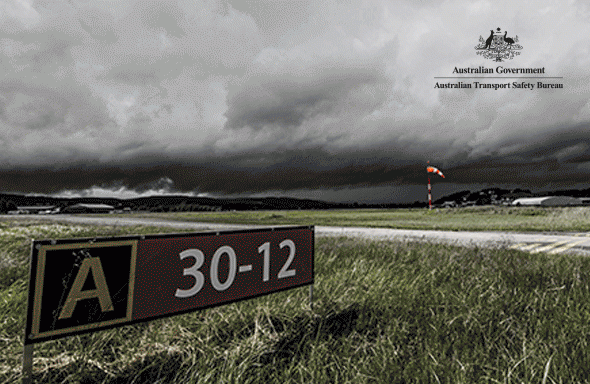
Twenty-one people were fatally injured in nine aircraft accidents in the last 10 years where pilots had flown into cloud, fog or darkness when they did not have the proficiency to do so, Australian Transport Safety Bureau (ATSB) figures show.
A total of 101 occurrences of visual flight rules (VFR) pilots inadvertently flying into instrument meteorological conditions (IMC) in Australian airspace were reported to the ATSB in the decade from 1 July 2009 to 30 June 2019. Of those occurrences, nine were accidents resulting in 21 deaths.
“These concerning figures taken from the ATSB’s National Aviation Occurrence Database show that almost one in 10 ‘VFR into IMC’ occurrences resulted in fatal accidents,” ATSB Chief Commissioner Greg Hood said.
“Weather-related general aviation accidents remain one of the ATSB’s most significant causes for concern in aviation safety; the often fatal outcomes of these accidents are all the more tragic because they are avoidable.”
To remind VFR pilots of the dangers of flying into IMC and to highlight the actions they can take to avoid a weather-related accident, the ATSB is launching a new safety promotion titled ‘Don’t push it, DON'T GO. Know your limits before flight’.
“‘Don’t push it, DON'T GO’ highlights three key messages: the importance of thorough pre-flight planning and having alternate plans, that pressing on where there is the possibility of entering IMC carries a significant risk of spatial disorientation, and the value of using a ‘personal minimums’ checklist to help manage flight risks,” Chief Commissioner Hood said.
Flying into poor weather without the training and experience to do so can rapidly lead to spatial disorientation.
Flying into poor weather without the training and experience to do so can rapidly lead to spatial disorientation when the pilot cannot see the horizon.
“The brain receives conflicting or ambiguous information from the sensory systems, resulting in a state of confusion that can rapidly lead to incorrect control inputs and a resultant loss of control of the aircraft,” ATSB Director Transport Safety Dr Stuart Godley said.
For pilots who fly under VFR, conducting thorough preflight planning and working to a personal minimums checklist aids sound decision-making both prior to take-off and during flight when faced with marginal weather or darkness.
“Pilots without a current instrument rating should always be prepared to amend and delay plans to fly due to poor or deteriorating weather conditions, and not to push on,” Dr Godley said.
“Have alternate plans in case of unexpected changes in weather, and make timely decisions to turn back, divert or hold in an area of good weather.
“Further, setting expectations for your passengers beforehand can take the pressure off continuing with the flight if the conditions exceed your personal minimums.”
Developing a personal minimums checklist is an effective defence against what pilots often term as ‘push-on-itis’ or ‘get-home-itis’, Dr Godley noted.
A personal minimums checklist is an individual pilot’s own set of rules and criteria for deciding if and under what conditions to fly or to continue flying based on your knowledge, skills and experience. As a personal ‘go/no go’ checklist they can help take the stress out of difficult decisions both before and during flight, acting as a safety buffer between the demands of the situation and the extent of a pilot’s skill.
“Discuss your personal minimums with an instructor or a more experienced pilot. Have the discipline to stick to your personal minimums in spite of external pressures. And treat your personal minimums as a line in the sand over which you would not cross,” Dr Godley said.
But if VFR pilots do find themselves in marginal weather, and are becoming disorientated or lost, they should seek whatever assistance is available.
“In particular, air traffic control services may be able to provide assistance, including radar vectoring away from bad weather if the aircraft is in an area of surveillance coverage,” Dr Godley said.
“There have been a number of reported occurrences where this simple action has averted potential disaster.”
Findings from ATSB investigations into aircraft accidents where a VFR pilot flew into IMC makes for sobering reading. A selection of those findings are published in the ATSB’s updated Accidents involving pilots in Instrument Meteorological Conditions publication.
Read the publication online Accidents involving Visual Flight Rules pilots in Instrument Meteorological Conditions
“The ATSB encourages VFR pilots to learn from the experiences of others, to help build a robust understanding of the risks of flying into IMC and just how rapidly such accidents can happen,” Chief Commissioner Hood said.
Last update 26 September 2019


